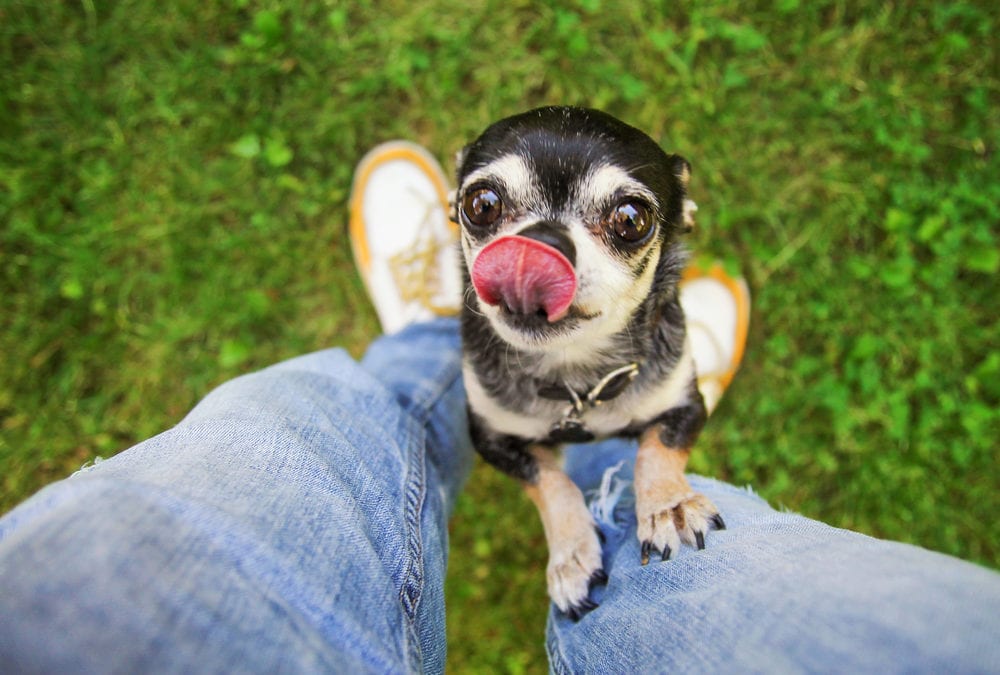Why does my dog follow me everywhere? Does your dog tend to be clingy or needier than other dogs? Dogs are pack animals, and they naturally see us as a part of their pack. It’s unusual to see a dog off on their own for long. They prefer to be with us or other four-legged family members. Forming a pack helps protect dogs in the wild and serves a great purpose among domestic dogs, too. Dogs also learn by seeking approval and they shape their behaviors around this need.
If your dog is the kind of dog who follows you everywhere, you may wonder if this is a problem. Your friends at Union Lake Pet Services are here to explain what’s driving the needy dog. We also look at the difference between clinginess and separation anxiety and how to help both.
The Needy “Velcro Dog”
You may have heard this term before, “the velcro dog”. This is a dog who never leaves your side, one who needs to be next to you at all times. The velcro dog is your shadow, a constant companion underfoot. They will even follow you into the bathroom if you allow them to. Is this behavior a problem, or just endearing?
The clingy dog is something we at ULPS hear a lot about. There are a few reasons why a dog is overly dependent.
- Breed – Some breeds are actually bred to be more dependent, such as lap dogs who are conditioned for close contact with their owners. Dogs who perform jobs like working, herding, and hunting learn to follow cues from their handlers. This means they stay close to their humans.
- Disability or illness – If your older dog cannot hear or see, this can make them more clingy. Feeling you close to them reduces their stress because they feel safe. Dogs who have certain conditions that limit their ability to be mobile will also be more dependent.
- Human-caused – Many behaviors like clinginess come from the owner’s behavior. If an owner teaches the dog to stay close to them at all times, the dog will respond in turn.
- Lack of enrichment – If your pet is bored, they will follow you around. Enrichment and exercise are important for your pet’s physical and emotional health. Lack of enrichment can lead to behavioral problems. Make sure to have a variety of games and toys for your pet, as well as opportunities for socialization, like walking to the park.
Signs That a Dog Has Separation Anxiety
When does basic neediness carry over into separation anxiety? It can be a fine line for some pet owners who feel like Fido is too attached at the hip. If a pet isn’t socialized at an early age, separation anxiety can follow as they grow older.
Separation anxiety is triggered when the dog cannot be without their owner. This usually results in destruction around the home and can lead to self-injury, escape, and other serious problems.
Here are common signs of separation anxiety:
- Urinating or defecating in the home
- Clinginess
- Excessive barking and howling
- Chewing, digging, and other forms of destruction
- Escapes from the yard/home
- Eating feces
- Pacing
- Vomiting/diarrhea
Some of these signs also signal a medical issue. Please have your pet examined to rule out any health concerns before deciding these signs are anxiety.
Is Your Dog Needy? Call Us!
If you are unsure about your dog’s behavior, we are happy to help assess what is going on. We can also offer suggestions for socialization and training if your dog needs help in that department. Our knowledgeable team can turn a velcro dog into a confident, tail-wagging, well-trained companion. Please call for an appointment.

